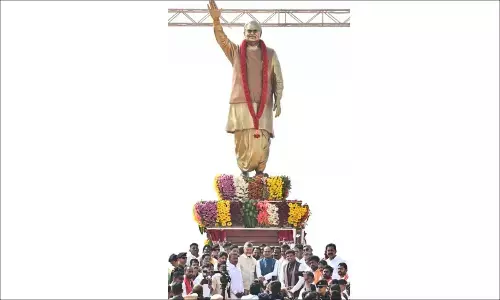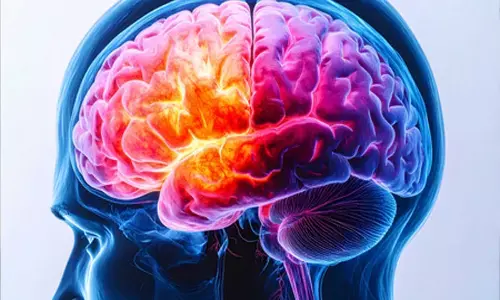Will mega bank merger help?

With GDP growth on downward spiral, the Modi govt needs to pull up it socks
It is a success story that has ended on a sad note. Andhra Bank, founded by freedom fighter Pattabhi Sitaramayya nearly 95 years ago, is now destined to shut its doors forever.
Set up in the port town of Machilipatnam in Andhra Pradesh on November 20, 1923, with a modest capital, the bank grew into mid-size financial entity now, with Rs 3.96 lakh cr business, 2,904 branches and 20,346 employees. But the bank has been in ICU for the past couple of years thanks to mounting losses and bad loans.
It incurred a heavy loss of Rs 2,800 crore last fiscal (FY19). Of course, it came back into black recently, but it will be a long way for Andhra Bank to go before it can call itself a stable bank. However, as a saying goes, all good things must come to an end. And it's time for Andhra Bank to go as it will be merged with Union Bank of India.
In a historic and bold move, the central government on Friday announced the biggest consolidation measure in the banking sector, which will see 10 banks metamorphosing into four mega banks.
In the process, Union Bank of India will absorb Andhra Bank and Corporation Bank to emerge as firth largest bank in the country. United Bank of India and Oriental Bank of Commerce will merge with Punjab National Bank, making the latter the second biggest bank in India after SBI.
Syndicate Bank is slated to merge into Canara Bank while India Bank will gobble up Allahabad Bank. Post the consolidation push, the number of PSBs in the country will come down to 12 from 18 now. The country was home to 27 state-owned banks in 2017.
Two consolidation efforts in the past, including merger of SBI subsidiaries with the parent in 2017, reduced the number to 18. As Finance Minister Nirmala Sitharaman pointed out during her big bang announcement, big banks will have some distinct advantages like better operational efficiencies and economies of scale.
Furthermore, the government will have better control over the banking system when number of its own banks are less. Ideally, the country should have three to five government banks, not more. Hopefully, the government makes sincere efforts towards that goal.
But the problem is that PSBs are a problem to the economy and economic growth the country aspires to achieve. Corruption, lackadaisical attitude of employees, bureaucratic nature of top management and political interference cost a shadow on their ability to embrace professionalism and mould themselves for new-age banking needs.
It's not that private banks are immune to the corruption malaise. As IL&FS scam and ICICI Bank's Chanda Kochhar episodes revealed, private banking system is not above suspicion. But I don't think corruption in the private sector is as rampant as in the PSBs.
But corruption is not visible because it's mostly confined to corporate loans of shady nature. That's reason why non-performance assets (NPAs), as bad loans are called in banking parlance, had shot up when RBI conducted thorough review of PSBs when Raghuram Rajan was at the helm.
Therefore, mere consolidation of public sector banks and infusion of precious capital into them will be of no use if the Central government fails to clean up the mess and make credit process in PSBs more transparent. That's not enough though. PSBs should be made more agile and customer friendly.
Then only, they can compete with private banks and new-age financial entities. This should be done without tweaking the pro-poor bias that PSBs always embody.
But the country's GDP growth has slipped to a six-year low in the first quarter of FY20 i.e. April-June 2019 period.
At a time when the Modi government is talking loudly about the Indian economy reaching the coveted milestone of $5 trillion by 2025, GDP clocked mere 5 per cent upswing in Q1 this fiscal thanks to slowdown in manufacturing and agriculture sectors.
The gross value added (GVA) growth in the key manufacturing nosedived to 0.6 per cent in the quarter. The reading was a whopping 12.1 per cent in the same period last fiscal.
Farm sector GVA slipped to 2 per cent from 5.1 per cent a year ago, confirming fears about distress in rural economy. Going by the latest GDP numbers, the country's economy is heading for a slowdown. That's crystal clear.
A long recession also is not ruled out. Perhaps, sensing this, the Modi government came out with a slew of measures to infuse life in the economy. The withdrawal of super rich tax surcharge on stock market players, transfer of Rs 1.76 lakh crore from RBI's reserves and the latest bank mergers are part of the government's initiatives to prop up the economy.
However, these measures may not be enough to pull our economy out of woods - more so at time a when the developed countries like the US and Germany are on the verge of slipping into economic slowdown.
The Modi government should pull up its socks and do much more for reviving economy. Otherwise, the goal of our economy reaching $5 trillion mark will remain a pipedream.
Furthermore, the ruling BJP's performance in 2024 General Elections will hinge on how the government handles the slowdown. Testing times for the Modi government indeed!


















